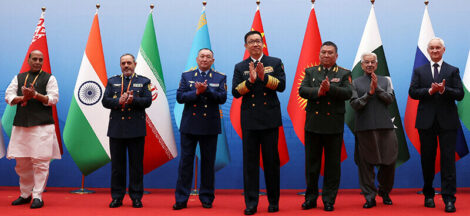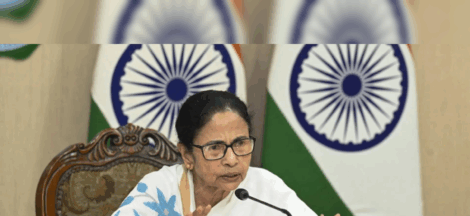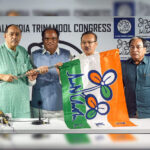By Manish Rai
Fierce attacks by Baloch rebels have shaken the Pakistani Army, while it was predominantly occupied on the Indian front. Balochistan’s provincial capital, Quetta, saw six attacks on Pakistani forces in just one day. Pakistan mobilised its Army units from Balochistan and redeployed on the Eastern border with India because of a recent military confrontation with India.
The ongoing operations of the Baloch insurgents put additional pressure on the Pakistan army as they spread thin. The biggest rebel group, Baloch Liberation Army (BLA), launched an operation named Herof military exercise in which it claimed to carry out over 71 coordinated attacks at more than 51 locations. BLA in a press statement said that it has taken control of many cities and set up check posts on highways, including main highway N-65 connecting Balochistan and Sindh, and took over many government facilities like the Levies Police Station and NADRA Office. These well-coordinated attacks clearly illustrate that if Pakistani Army units in Balochistan are redeployed to other fronts, even for a short period, the state apparatus is very vulnerable and is at the mercy of rebels. With these extensive attacks, the Baloch insurgents once again demonstrated their reach, capability, and ability to coordinate complex attacks.
Almost all the Federal and State security and intelligence forces have a significant presence in Balochistan. The Pakistan military, including the Army, Air Force, Navy, and Coast Guard, all maintain a presence in Balochistan, with the most significant branch being the Army. The Pakistan Army XII Corps, commanded by a three-star general who serves concurrently as the commander of the southern command, is based in Quetta and is responsible for the province.
The Pakistan Air Force (PAF) operates four bases in Balochistan. The primary base is Samungli in Quetta and is home to the 31st Fighter Wing. The Pakistan Navy operates four naval bases on the Arabian Sea in Balochistan. The primary base is the deep-water port of Gwadar in western Balochistan, which is the second largest port in Pakistan after Karachi. The port is also home to the 3rd Battalion of the Pakistan Coast Guard. The three smaller naval bases are located in Jiwani, Ormara, and Pasni. The Pakistan Intelligence apparatus also maintains a mammoth deployment in Balochistan. The Inter-Service Intelligence Directorate (ISI) is responsible for strategic intelligence as well as conducting operations and has a large element in Quetta. The ISI’s Joint Signals Intelligence Bureau (JISB) operates signal intelligence collection stations in Saindak, which covers the western border, and in Gwadar, which covers the shipping lanes of the Gulf of Oman.
In addition to the ISI, each service has military intelligence assets, collectively known as MI, which support tactical requirements. In addition to these forces of the Federal government, the Pakistan Ministry of Interior (MOI) controls the Balochistan Police and the Frontier Corps in the province. The Balochistan Police have jurisdiction across the province and are responsible for fighting crime and maintaining law and order. The Balochistan Constabulary, sometimes referred to as levies, provides an adjunct to the police in the remote areas of the province. The Frontier Corps Balochistan (FCB) is deployed in large numbers in the province. It’s a paramilitary force under the Ministry of Interior (MOI) and is a critical link in the security architecture of the province. The Pakistani establishment, despite deploying so many forces in large numbers, always struggles to maintain full control over Balochistan.
These spates of attacks that have taken place in the last few days demonstrate that the Baloch insurgency has entered into a crucial new phase. After the US withdrawal from Afghanistan in August 2021, large quantities of highly sophisticated weapons, which were used by Afghan security forces, have made their way to the region’s black markets. Many of these US-made weapons have ended up in the hands of Baloch armed groups as well, like M16A2 and M16A4 assault rifles, Trijicon ACOG optics, and M203 under-barrel grenade launchers. In addition to small firearms and RPG-7 pattern rocket launchers,
Baloch insurgents are using various machine guns like PK(M) and MG3 variants. Sometimes, insurgents have also been spotted using heavy machine guns (HMGs). Baloch armed groups have gradually moved towards the consolidation of what was previously a fragmented insurgency. Over the last few years, insurgent groups have either merged or formed tactical alliances to put up a united fight against the Pakistani state. By doing this, they were able to have a better pool of resources and better coordination to carry out complex operations. Also, the leadership of the armed groups has shifted from Tribal chiefs to the well-educated and highly motivated Baloch middle class. And these new ranks of Baloch insurgents are transforming the insurgency into well-organized guerrilla warfare.
As a matter of fact, Baloch armed groups have increased their capabilities many times over in every dimension. Over the years, Baloch rebels have improved their communication capabilities and armaments significantly. The longevity and resilience of the insurgents are undoubtedly a strength, as they have learned to adapt and respond to various counterinsurgency methods of the state. On the ground, these groups are capable enough and can give a bloody nose to the Pakistani army through guerrilla tactics like Ambush, IED blasts, Sniper fire, and Suicide attacks. It’s a hard truth that Balochistan is slowly slipping from Pakistan’s hands, and it’s only a matter of time before Islamabad will witness a second division of the country unless it does a major course correction in Balochistan. (IPA Service)
By arrangement with the Arabian Post




 Former BJP Lok Sabha Member John Barla’s Switch To TMC Is A Big Jolt For Saffrons In North Bengal
Former BJP Lok Sabha Member John Barla’s Switch To TMC Is A Big Jolt For Saffrons In North Bengal 